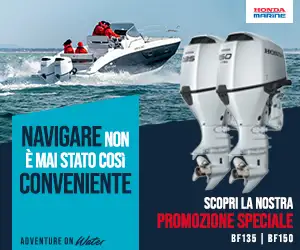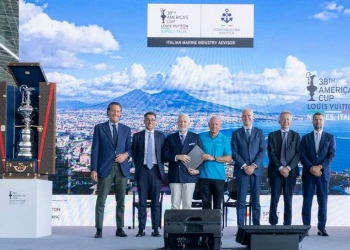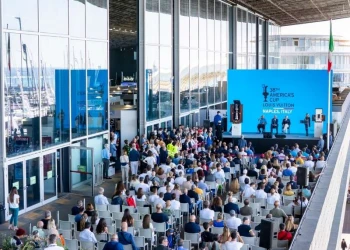
Job Vermeulen / America's Cup
Kiwis launch their AC40 in bumpy windy Barcelona
A rapid turn-around from delivery to on the water by the Emirates Team New Zealand shore crew was rewarded with a perfect day of building southerly breeze in Barcelona and the persistent easterly-flowing chop and swell that gained momentum into the afternoon and produced some of the most testing conditions that the America’s Cup venue can serve.
‘Te Kãkahi’, the New Zealand pure one design AC40 launched into the team’s pen and docked out just after midday with the sailing team were keen to get on the water to commission the yacht ahead of the expected swell build. Once out into the open waters and free from the Port Vell entrance, it was straight down to business with easy flight before a batten issue on the jib after about 10 minutes of sailing saw the team come back into the shelter of the harbour to fix the issue.
Nathan Outteridge described it saying: “Some of the battens weren't sitting perfectly on the forestay on the jib so we did like an initial commissioning lap and we normally want to stop after five or 10 minutes just to check the whole system so it's a bit bumpy out there for the 40s to bring a chase boat alongside so we just sailed back in and yeah went jib up and down and fixed that problem and then had a full look through the boat, everything was running fine so then yeah we went back out and for another hour or so of sailing.”
Nathan went on to describe the day, saying: “It was one of those perfect days in Barcelona where the breeze built quite quickly and we’ve seen the other guys outside in their 40s here and today was our first day in the AC40 itself, it only got here a couple of days ago, so for the team to turn it around so quickly to get it ready for today was awesome, and as you can see it's quite different to the AC75 but we had a lot of fun sailing it today.”
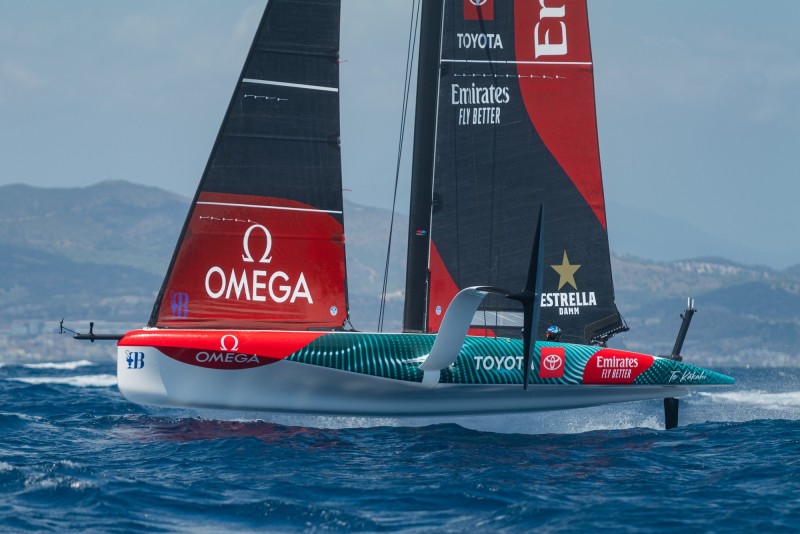
After a while of settling down, it was interesting to watch the tacks as they got faster and flatter with almost immediate windward heel post manoeuvre. The way all the teams are honing their techniques in this final run to the America’s Cup is where big performance difference will be found, and the Kiwis certainly look like they’re working hard with the coaches and analysts to deliver to the optimum.
How that programme looks now that Emirates Team New Zealand has both the AC75 and AC40 in commission is most likely going to be weather dependent as Nathan alluded: “Now we're in a position where we can take either boat out sailing and we have a reasonable list of things we want to learn more up here in Barcelona - some of it's on the little boat some of it's on the big boat and of course the 40s will be eventually racing altogether next month so we just sort of look at the priorities for the day, look at the forecast and make a plan from there.” A solid short blast for the Kiwis today.
Whilst the Kiwis docked-in ahead of the swell building, it was a very different story for INEOS Britannia today who looked absolutely on it all afternoon in T6 with an almost demonstration of big wave, big breeze sailing by Sir Ben Ainslie and Giles Scott. With the southerly breeze and a full-on easterly swell, watching ‘T6’ on starboard tack from bow-on (see the video) was a lesson in swell sailing and fascinating to watch some of the best foiling sailors on the planet aggressively steer through the chop. All afternoon, Ben & Giles had ‘T6’ absolutely flying and seemed completely un-fazed by the conditions. Bleddyn Mon and Iain Jensen again showed why they are so highly regarded in Cup circles with a full display of modes going with ease from desperately low, and one would suspect safer, flight into bow up/stern down and some hair-raising high flight downwind. It was a relentless session that will have boosted confidence not only in the sailor’s technique development but in ‘T6’ as a boat and the use of the J5 jib – seen only once previously in Palma in mid-winter – really lit the afterburners and will have provided some excellent data for the team going forward. Sensational stuff from the Brits.
Speaking afterwards, Ben Ainslie commented on the fine balancing act that the sailors perform in the top-end conditions on foiling boats saying: “Well it’s the challenge that everyone is finding and expectedly so in the sea state. It’s very hard to get really accurate flight control so where’s the sweet spot there between having too much immersion and slowing the boat down but not falling off the foil? And again, the control systems come into that a little bit, the sailor technique, just time on the water getting used to the sea state out here and trying to do a better job on that, and of course the design of the hull and the foils so there’s a lot that goes into performance in these conditions and for sure plenty of performance is still on the table I would say.”
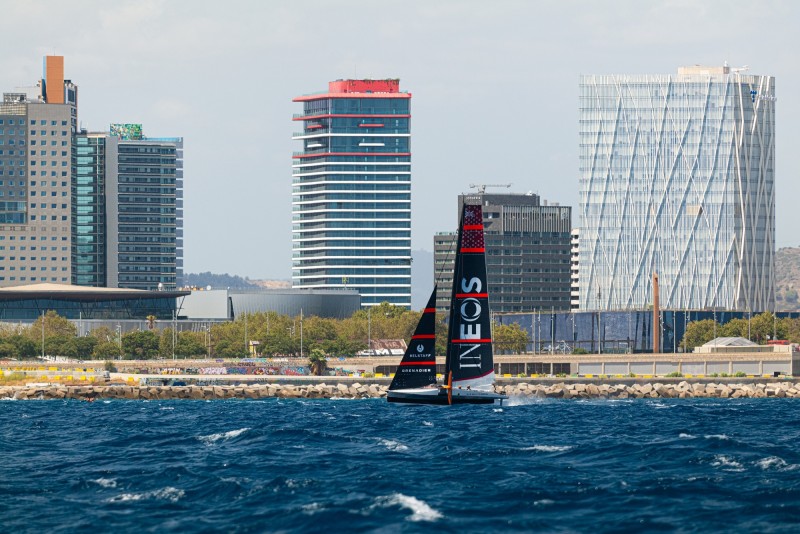
When pushed about low flight over high flight Ben commented: “In terms of the foil interaction if it starts getting too much piercing in the sea state it can get difficult that said if you dig the hull in too much going to slow down as well so it's finding that happy sweet spot, that middle ground where you feel like you’ve got enough control with the foil but you’re not digging the hull in so yeah again that's what all of the teams no doubt are trying to find the optimum.”
Speaking more broadly about the INEOS Britannia team settling now at what will be their base through to the start of the 37th America’s Cup, Ben was full of praise for what’s been achieved so far saying: “It's really great to be here in Barcelona, to have the teams here as well of course it just adds a little sense of excitement really. Okay we’ve still got 12 months until the event but just to have everyone out here racing on the same patch of water or training on the same patch of water it's going to be great. I think this time next year Barcelona is going to be an incredible event so as a team we’re very happy to be here and excited, we’ve got a good facility, the team have done a really good job getting that together and it will be a fantastic base over the next 12 months.”
Whilst the Brits were flying, it was a different story for Alinghi Red Bull Racing who were actually out on the water for some five hours this afternoon in their AC75 ‘BoatZero’ but only managed to get sailing for approximately an hour as technical issues dogged their session. The Recon Team believe that a new (or re-conditioned) mast has been set alongside a new mainsail – the M2-2R – with aggressive battening along the foot that curves upwards to the clew point and certainly looks effective in controlling the leech. Paired with initially the J3-1R jib, as the wind built and the waveforms increased, the Swiss changed down to the little-used J6-1L which offered a bit more forgiveness.
When the team did get sailing, it was a thrilling session in tough conditions and as Barnabé Delarze commented: “Yeah back on the water after a long time out so there were some issues we had to fix so it was a bit of a waiting game but we managed to get some decent laps towards the end.”
Those ‘laps’ were high intensity with the afterguard of helmsmen Arnaud Psarofaghis and Maxime Bachelin and Flight Controllers Bryan Mettraux and Yves Detrey battling to keep the boat’s bow down tendencies under control with some dramatic, but to be expected, splashdowns in the swell but looking at their manoeuvres, there were crisp and powerful flicks through the tacks with immediate windward heel and some fully committed gybes that produced an overall foil-to-foil ratio of an impressive 80%.
The Swiss were sailing well in the conditions and would have come off the water wanting more. Dean Barker, Sailing Team Adviser, was onboard ‘BoatZero’ whilst Phil Robertson was on the Chase Boat observing and, in those conditions, they would have been pleased with what they saw. More to come from the Swiss this week.
